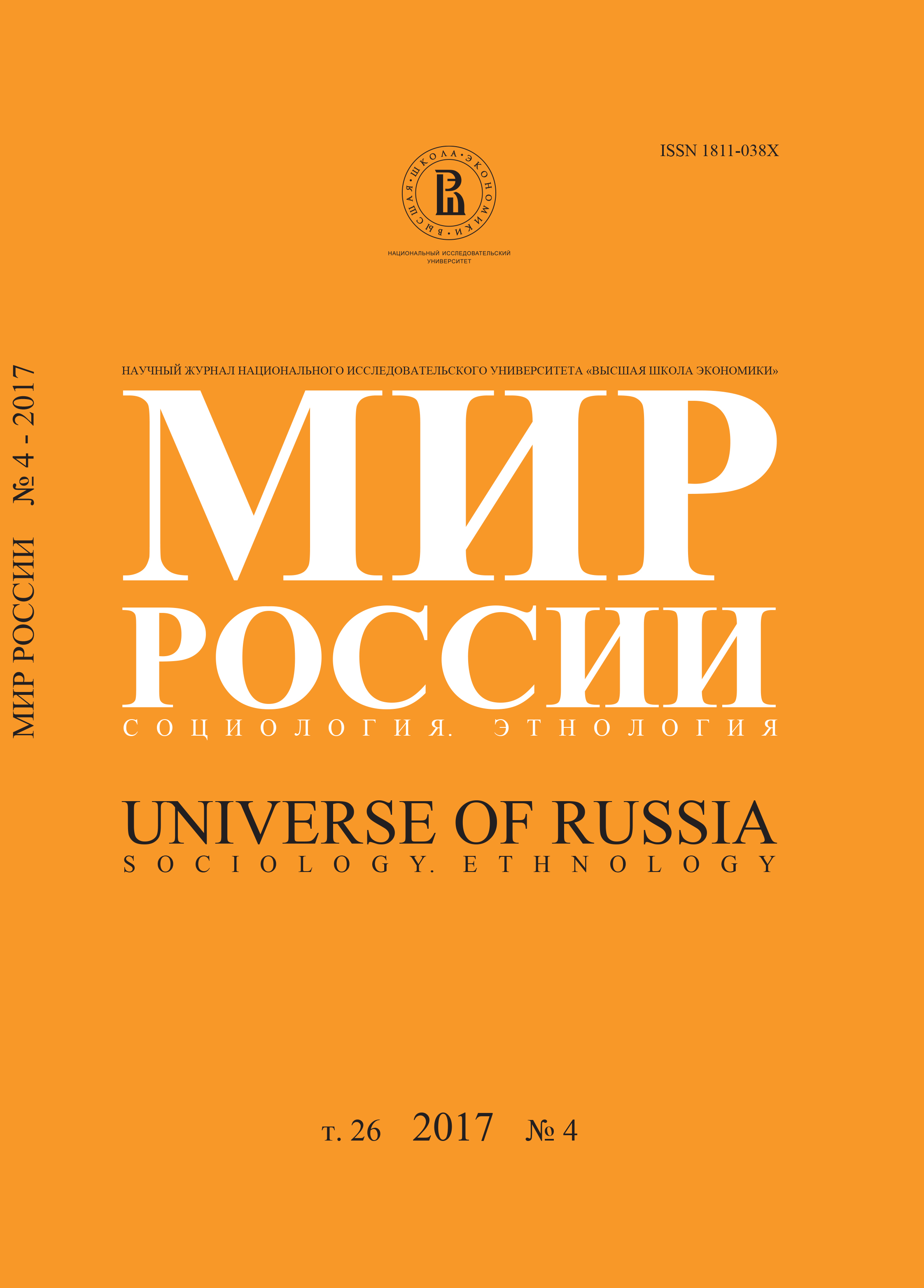Between the Temple of Culture and the Shopping Mall: New Institutions in the Structure of St. Petersburg’s Artistic Field
Abstract
Mariya Safonova – Phd in Sociology, Associate Professor, Department of Sociology, National Research University Higher School of Economics. Address: 16, Souza Pechatnikov St., St. Petersburg, 190008, Russian Federation. E-mail: msafonova@hse.ru
Nadezhda Sokolova – Master Student, Department of Political Science and Sociology, European University at St. Petersburg. Address: 3a, Gagarinskaya St., St. Petersburg, 191187, Russian Federation. E-mail: nsokolova@eu.spb.ru
Alexandra Barmina – Master Student, Department of Sociology, National Research University Higher School of Economics. Address: 16, Souza Pechatnikov St., St. Petersburg, 190008, Russian Federation. E-mail: barminaaa@gmail.com
Citation: Safonova M., Sokolova N., Barmina A. (2017) Between the Temple of Culture and the Shopping Mall: New Institutions in the Structure of St. Petersburg’s Artistic Field. Mir Rossii, vol. 26, no 4, pp. 143–168 (in Russian). DOI: 10.17323/1811-038X-2017-26-4-143-168
This article analyzes the organizational field of cultural production in post-Soviet St. Petersburg. The study is based on two types of data gathered 2012-2015: (1) a sample of semi-structured interviews with professional and managerial staff carried out in 34 artistic institutions, and (2) ego-network data describing professional contacts of managers and art curators. First, we engage with the existing discussion on the structures and formation of organizational fields with special emphasis on studies focusing on artistic institutions. We then describe the population of artistic institutions that emerged in the 2000s, and discuss the transformation of their organizational forms and the emergence of the economic niches occupied by old and new institutions. We map inter-organizational links using the tools of social network analysis to check if new art institutions constitute a cohesive group, and study how this group is connected to other subpopulations in the field. Finally, we analyze the professional ideologies which are used by players in the field to find out if the new organizations possess the institutional legitimacy necessary for their survival and development via the acquisition of resources.
The analysis reveals that the new subpopulation of artistic institutions emerged in the early 2000s as a result of grass-root initiatives without stable state or private funding. The explicit mission of these organizations is the distribution of contemporary artistic production. These new institutions are particularly characterized by a combination of different artistic (exhibitions, performances, film screening), academic (lectures and seminars) and commercial (café and shops) activities within a single public space, and by their reliance on private, rather than public funding. The number of these new artistic institutions grew in the early 2000s, but this growth was extremely unstable due to the lack of financial resources and legitimacy. Private institutions emerged in the organizational field, in which the rules of the game are still determined largely by old public institutions. Social network mapping also demonstrates that the new private artistic institutions occupy a disadvantageous position in the network structure of cultural organizations. Old public cultural organizations receive funding through state programs, and their symbolic dominance is ensured by state and educational institutions. As a result, they are more capable of securing private funding as well, since sponsors prefer supporting legitimate art and legitimate cultural activities.






